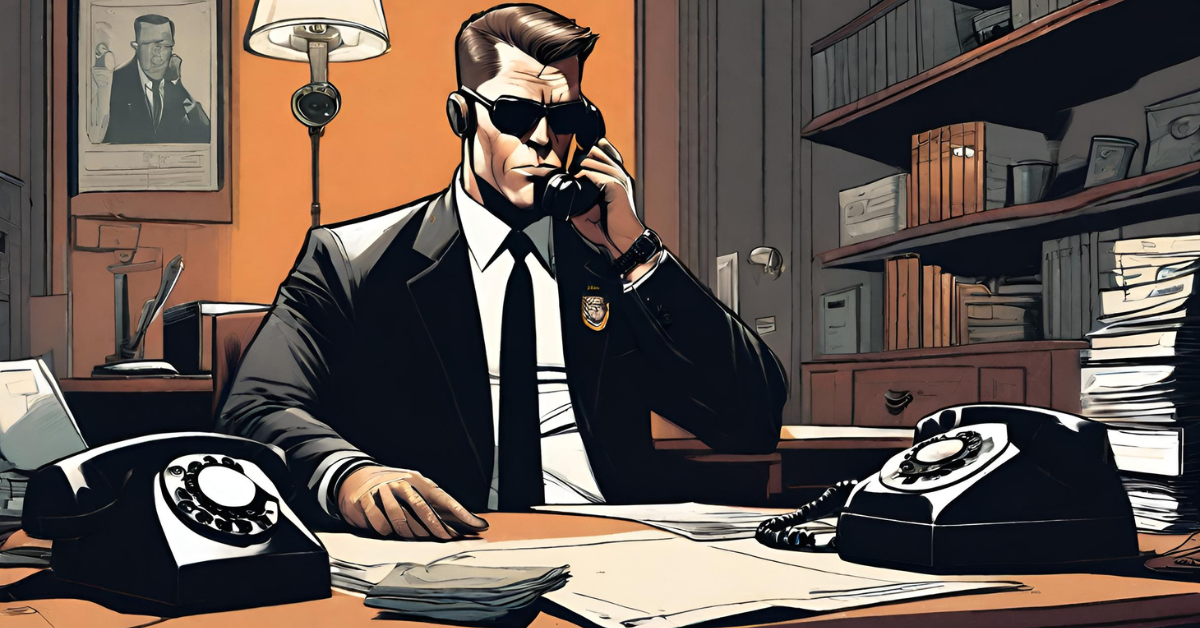
Secrets Unveiled: My Childhood Discovery of the White House Bunker Line
In the era before internet directories, navigating the world of phone numbers meant thumbing through hefty phone books or resorting to costly operator assistance.
The arrival of the new phone book was always a moment of anticipation and delight for me. As a child, one of my cherished pastimes was poring over its pages, eagerly scanning for the latest area codes. GTE’s phone books, in particular, held a special allure, with their meticulously detailed breakdown of time zones across America and accompanying maps highlighting the sprawling network of area codes crisscrossing the country.

With each annual update, the pages would come alive with the addition of new area codes, offering a glimpse into the evolving telecommunications landscape. From the birth of fresh area codes to the intricate division of existing ones, the phone book served as a fascinating chronicle of technological progress.
As an elementary school student, I found myself tinkering with the phone lines whenever I wasn’t engrossed in my clandestine internet escapades. My insatiable curiosity drove me to explore the inner workings of the phone systems, often poring over the phone book to learn about various features offered by the phone company.
In the realm of telecommunication marvels, there were treasures like call waiting, caller ID, and the enigmatic *69 and *67 features, all just a sequence of numbers away on your phone keypad. I recall vividly a chance encounter with a parent of a friend during my elementary years, who happened to be employed by the phone company. Inquisitive as ever, I bombarded him with queries about the inner workings of the telecommunication systems – from the mechanisms behind call charging to the activation of services and a plethora of other mysteries that fascinated a curious young mind like mine.
Back in the day, alternative phone services like 10-321 emerged, promising cheaper long-distance calls compared to the rates charged by the traditional phone companies. By dialing 10-321 before making a long-distance call, you’d be routed to a competing carrier offering more wallet-friendly rates. It was a concept that intrigued me immensely.
Living in an area where even a call to a friend just a few miles away could rack up hefty charges due to the long-distance nature of our exchange, I was acutely aware of the costs involved. These expenses weren’t fixed either – they fluctuated depending on the time of day, with peak hours carrying higher rates. While my parents were understanding of our desire to chat with friends, they were mindful of the phone bill, often limiting our calls to prevent a financial shock.

Despite these constraints, I was lucky enough to have parents who allowed me to connect with friends over the phone. I fondly recall lengthy conversations with an “elementary school girlfriend” who resided within the same telephone exchange, sparing us from the dreaded long-distance charges.
When we knew the phone call was going to be a certain length we’d dial 10-321 because the first twenty minutes would only cost 99 cents versus the average $5 for a call of the same length. Even my parents were using it when they knew a call might take longer.
Armed with newfound knowledge, I embarked on a summer project fueled by curiosity. Armed with a phone book, notepad, and an unsupervised room, I began dialing random numbers within my local exchanges. With each call, I meticulously recorded whether it was a business, a dead-end, or someone’s residence. People’s willingness to provide information over the phone – even to a curious kid – astounded me. Some even disclosed the names associated with the numbers, allowing me to cross-reference with the phone book.
One encounter, however, stood out from the rest. A gruff voice on the other end of the line sharply rebuffed my inquiry with a stern warning not to call again. It was a stark departure from the friendly exchanges I was accustomed to in the Midwest. But undeterred, I pressed on, adding the encounter to my growing collection of phone number data.
In a bid to unravel more mysteries, I decided to test whether the same numbers appeared in different exchanges. To my amazement, several of the last four digits matched up across exchanges, revealing a fascinating glimpse into the underlying patterns of phone numbering systems.
During a visit with my friend’s dad, who had recently left his job at the phone company, I seized the opportunity to delve deeper into the workings of the telecommunications world. Despite his shift to a defense contract company, his wealth of knowledge about the phone system remained unparalleled. While others might have found my incessant questioning tiresome, especially coming from a young kid, he seemed genuinely appreciative of my thirst for understanding.
With each conversation, I gleaned more insights into the intricacies of billing systems and service features like *67 and *69. Armed with this newfound knowledge, I realized that I could experiment with long-distance calls to different area codes or utilize these services without incurring additional charges on our phone bill.

Equipped with my trusty notepad, I set out to test the boundaries of my newfound understanding. Would a friendly voice answer the phone in New York, just as it did in my home state of Indiana? Armed with curiosity and determination, I dialed new area codes, eager to see where the conversation would take me.
Picture the sheer delight I felt as I began connecting with people all across the country. With each new encounter, I grew bolder, engaging in conversations even after realizing it was a “wrong number”. Unlike today, where we often ignore calls due to scams or telemarketers, back then, every call was a chance to connect with a real person on the other end.
Yet, amidst these interactions, one number remained etched in my memory. It was the same one I had dialed by chance within my own area code, where I encountered an unfriendly voice. Intrigued, I tried the digits in a different area code, only to be met with the exact same gruff response. It gave me pause, prompting me to hang up immediately.
I dialed a few more numbers from my notepad, but my curiosity led me back to the “angry number.” I decided to try it in a different area code, only to encounter the same gruff voice once again. It was baffling. Despite understanding how the system worked, I couldn’t comprehend why I was hearing the same voice in different locations.
This wasn’t an 800 or 900 number, where calls could be routed to the same destination. The mystery deepened, leaving me utterly perplexed.
Despite sensing trouble, I persisted. With each attempt in different area codes, the voice on the other end grew increasingly hostile. In one of my final calls, the man sternly warned me to stop, emphasizing that the number was for official use only. I couldn’t help but let out a nervous apology.
By then, it must have been clear to the man that I was just a child. Nearly on the verge of tears, I uttered those words, hoping to convey my innocence and regret.
With a somewhat gentler tone, the man sternly reiterated that the phone wasn’t for games and that the number was off-limits for such activities. Though his anger still resonated, there was a slight softening in his voice before the line abruptly went dead.
Debating whether to make one final attempt to identify the caller, I hesitated with the phone in hand. Just then, it rang, catching me off guard. Anxious to prevent anyone else in the house from answering, I hastily picked up.
It was the same man on the line. His tone turned harsher as he warned me never to call the number again, dismissing my inquiries with a sharp reprimand. As his words sank in, anger began to replace my earlier tears. Who was he to say I’d get in trouble?!
A day or two passed, and my curiosity got the better of me. I dialed the number again, only to be met with an immediate hang-up. Taking it as a clear sign, I decided not to push further.
Understanding the weight behind the words “official use only,” I recalled encountering the phrase on mail delivered to our house. Inquisitive as ever, I once asked a postal worker about its significance, and they explained it denoted materials meant exclusively for government purposes. So, when the voice on the other end of the line emphasized the phrase, warning me sternly, it hinted at something government-related. The implication loomed large—I might face serious consequences.
Weeks went by, and I had all but forgotten about the mysterious phone call incident when there came a sharp knock at the door. Two impeccably dressed men stood on our doorstep, their inquiries aimed squarely at my bewildered mother regarding her child’s phone usage. Confused, she had no inkling of my recent activities.
In the aftermath, the phone I had been using was unceremoniously removed from the wall, and my phone privileges were revoked “indefinitely”, a punishment that felt like an eternity in my young mind.
In the depths of my adult life, engaged in a project that granted me access to a trove of organizational phone numbers, a forgotten memory stirred within me. With a surge of curiosity, I entered the enigmatic number from my past into the database, eager to unveil its secrets…

To my astonishment, I discovered that the number belonged to a government crisis hotline, reserved for use in national emergencies or situations involving high-ranking officials such as the President. It bore the ominous label “for official use only” and remained operational, unchanged through the years.
For a fleeting moment, I contemplated dialing it once more. Yet, the fear of jeopardizing my contract loomed large. While the voice on the other end might not be the same, I was acutely aware of the advanced technology at play. With this newfound knowledge of the hotline’s significance, I hesitated to risk any further inquiry. Thus, I chose to let the past remain undisturbed.